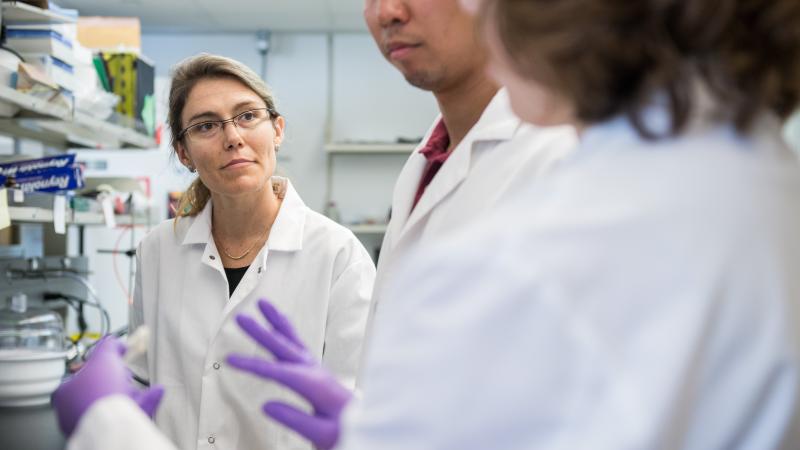New Grants Will Support Research on the Mechanics of Tumor Cells
October 8, 2019

TROY, N.Y. — At the cellular level, cancer can be viewed as a mechanical engineering challenge. The disease alters the structure and function of cells and tissues, which are meant to perform very specific tasks.
Through better understanding of the mechanical processes at work in tumors, Kristen Mills, an assistant professor of mechanical, aerospace, and nuclear engineering at Rensselaer Polytechnic Institute, hopes to support the development of more effective treatments.
Both the National Science Foundation and the U.S. Department of Defense have recently honored Mills with prestigious research awards, signaling a growing interest in this engineering approach to a complex medical challenge.
“What we’re ultimately aiming for are new therapeutic targets, or pharmacological targets,” said Mills, who is also a member of the Cancer Research Group (CARGO) within the Center for Biotechnology and Interdisciplinary Studies (CBIS).
The way that tumor cells sense stresses and strains in their environment, and the way that they generate forces, is different than how healthy cells in a normal, healthy environment behave, Mills explained. Her team is looking closely at what is different about those cells biomechanically, in the hopes of revealing something new about particular proteins or pathways associated with tumor cells.
“Professor Mills’ project represents a nice example of Rensselaer’s unique angle to improve human health where a new convergent approach, in this case the intersection of biomechanics and cancer cell biology, is used to address the challenging problem of metastasis. This project will drive cancer research in a new direction,” said Deepak Vashishth, the director of CBIS.
Earlier this year Mills received the NSF’s Faculty Early Career Development Program (CAREER) award grant, given to early-career faculty who “have the potential to serve as academic role models in research and education and to lead advances in the mission of their department or organization.”
This will support the cellular biomechanical research Mills and her team are doing to determine how the mechanical alterations caused by tumors affect the behaviors of cells and tissues.
In patients with cancerous tumors, Mills said, diseased cells send biochemical signals to surrounding cells and tissue, altering their function. For example, fibroblasts, the cells that create the extracellular matrix surrounding the tumor, are prompted to secrete more. This causes that extracellular matrix to become abnormally stiff.
In tissue that is healthy, and generally much softer, cells have an intricate mechanical communication with the matrix and each other. This allows for proper signaling about when and how cells should grow and divide. In tumor cells, Mills said, that signal is lost, which somehow encourages diseased cells to proliferate, even against a very rigid matrix.
“We have cells in this abnormally stiff environment, stiffer than they would normally want to divide in. Can we figure out why they decide to divide? What are the altered force generating and force sensing mechanisms there?” Mills said.
Mills has also generated interest from the Department of Defense, as she looks at cell mechanics from other angles.
She was recently awarded the Neurofibromatosis Research Program’s New Investigator Award through the Department of Defense - Congressionally Directed Medical Research Programs.
This award will support her lab’s work to characterize the mechanical properties of different tumor types associated with the genetic disorder Neurofibromatosis Type 1 (NF1). Many of those tumors are benign, but about 10% of patients with NF1 develop malignant tumors in their peripheral nervous system — the system that connects the brain and spinal cord to the rest of the body.
Right now little is known, Mills said, about how mutations in the NF1 gene affect the biomechanics and mechanobiology of the cells that carry them and if those properties drive the formation of malignant tumors.
“We know a lot about the genetic mutation but not if it’s necessarily the altered biomechanics that can propel or influence the progression of the disease,” Mills said.
Knowing what she knows about tumor development in other cases, Mills believes that a better understanding of the mechanics could yield promising results.